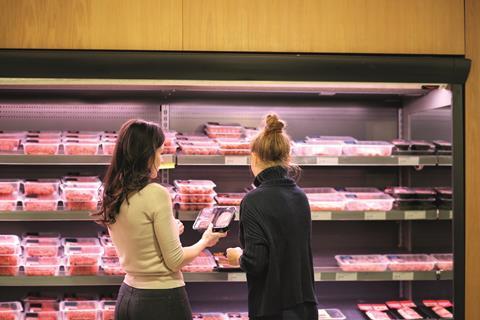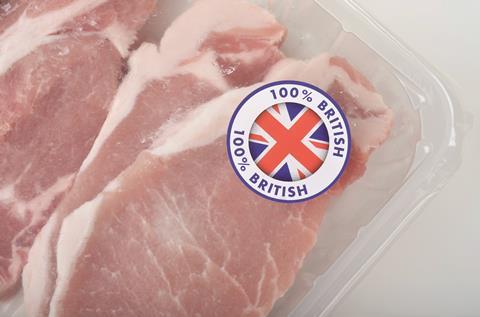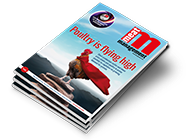As reviews by the NFU and AHDB question the efficacy of the Red Tractor assurance scheme, JP Garnier delves into its origins, challenges and the polarised opinions surrounding it.
In light of the reviews of the Red Tractor assurance led by the National Farmers’ Union (NFU) and AHDB, I analyse the validity of the scheme and present its prospects. In the terms of reference of the two reviews, for the governance of the scheme and its future (yet to completed) it is stated that “Red Tractor should retain its position” which, frustratingly, precludes the conclusions.
The Red Tractor farm assurance scheme generates strong opinions. Authors of the Campbell Tickell governance review of Red Tractor describe being “struck” by the widely contrasting perceptions of the organisation. Indeed, the review received 2,227 submissions, many of which were negative. This analysis of Red Tractor (RT) / Assured Food Standards (AFS) makes no apologies in taking the side of the many exasperated farmers and stakeholders of the British meat sector.
A political history
To understand the validity of farm assurance schemes, we need to revisit the late 1980s and early 1990s and the never-ending headlines of food safety issues such as salmonella in eggs and the Food and Mouth outbreak that led to a brief collapse of consumer confidence in food safety - notwithstanding other priorities including differentiation, on which we will return. The development of standards of meat production to ensure product safety was a logical step in response of the fears of the time and provided an important tool to restore consumer confidence.
Farm assurance schemes were hastily developed in the early 1990s, including the Quality Meat Scotland Cattle and Sheep Assurance Scheme, now 34 years old and Pig Assurance scheme in England. The standards rapidly incorporated animal welfare criteria and sub-schemes for the whole supply chain including feed, logistics and processing. In England, the schemes morphed into Farm Assured British Beef and Lamb (FABBL) and Farm Assured British Pork (FABP).

In 2000, the National Farmers’ Union wrestled control of the English farm assurance organisations under a unified scheme, using the reason of consumer confusion with the different schemes. At the time, many in the meat sector did not support the move. In fact, confusion has not stopped; nowadays, there are no less than eight mainstream farm assurance schemes for meat, dairy and eggs in the UK, not including organics. The image of the Red Tractor name and logo did not entice consumers to a pasture-fed, green production, being more suitable for mechanised arable farming. Stakeholders in the meat production chain had lost their say in a larger entity.
Despite being buffeted by its many critics from pressure groups, keen for ever tighter standards and, in reverse, farmers’ groups worried of increased costs of production, red tape and controls, the Assured Food Standards umbrella organisation for Red Tractor has ploughed ahead and has had to adapt to changing priorities from food safety and traceability to animal welfare, product quality (under the Quality Standard emanation) and, more recently, to the environment.
There is a hard logic for normative organisations in extending and complexifying standards. For instance, four versions of the standards have been issued. The environment, the weak spot, was to be the subject of an independent set of norms. However, little consultation and no cost assessment have been carried out with farmers and stakeholders, leading to the current situation.
Major retailers have a great influence on Red Tractor as the main outlet for British produce. They benefit from farm assurance schemes in terms of sourcing that is costless for them in practice (we will return on the price premium) and push for ever tighter standards without commitment to the brand. The tussle between retailers, as Sector Board members and co-owners of the Assured Food Standards, and the other stakeholders is one of the main political undercurrents.
What is the use of farm assurance?
The hard reality is that the initial aim of a high level of food safety independently audited has given way to origin, differentiation and branding. Across Europe, national schemes promote domestically produced meat against imports with some farm assurance schemes strongly focused on export. EU legislation, by only allowing the promotion of origin to differentiated products backed by a quality scheme, is partly responsible for the change of emphasis.
What better example than the Scotch and Welsh assurance schemes backing the Scotch and Welsh brands? Red Tractor rapidly adopted the British flag and is now a well-recognised British food brand for more than 70% of the population. However, a 2021 survey shows that only 2% of the British public believes that assurance schemes substantiate the trust in British food quality.
Assurance must find a difficult equilibrium between vested interests aspiring for ever tighter standards, for example on animal welfare, and scheme members wanting to produce food profitably with minimal red tape in response to market demand. This quandary has never been resolved with Red Tractor standards described at the same time as too weak or too costly and burdensome.
Assurance schemes were first developed to bridge the gap between minimal regulatory standards and best practice. The development of food safety, animal welfare and environmental legislation since the early 1990s has led to a rise at the lower end of production standards, lessening the validity of assurance schemes.

The lack of consumer interest and understanding of quality schemes is overwhelming. Yes, consumers want to buy British food but are not willing to pay a large premium for quality assured products. A major issue of farm assurance schemes is that they are highly technical and fail to relate emotionally with consumers.
British farmers benefited from a small premium for farm assured meat in the 1990s. They were also told that farm assurance schemes would allow them to access sales in modern retailing. Both arguments have become obsolete as supermarkets are now much more price-driven and need to secure tighter supplies. The first question of the terms of reference of the review of the Red Tractor scheme, how farm assurance can deliver value back to scheme members is totally valid, and at the crux of the current ‘crisis’. At this point in time, farm assurance is a net cost to farmers and processors.
Despite part-owning the scheme, British retailers have not supported Red Tractor well enough in terms of branding and eschew paying a premium for farm assured produce. Moreover, farm assured beef, pork, lamb or poultry does not attract a premium on export markets. This conundrum remains unresolved.
Governance issues
The Campbell Tickell governance review is based on an internal survey of people making the 15 boards and committees of the organisation including 18 directors, 180 people involved, considering the multiple ownership of the scheme. Let’s stress it again, this is an internal review representing vested interests, and I forward that the conclusions are biased by the survey. Still, the report makes some interesting points, such as the perception that the members of the Sector Boards were selected with a view to minimise any serious challenge to Red Tractor.
Political tensions between appointees as representatives of their respective organisations are noticeable. The opacity of decision-making at the main board level is mentioned. Less than 30% of respondents of Sector Boards and Technical Advisory Committees agreed that lines of communication between the Board and Sector Boards were “open and effective”. It states further: “Red Tractor’s representative governance model […] may not - in its current form - be capable of dealing effectively with challenges as intense as the company’s current operating environment”.
Unsurprisingly, communication to farmers and cosmetic changes to the governance structure are advocated as the solution to the current predicament. Alas, Red Tractor issues are much more fundamental, and we need to wait for the second part to the review to air them.
With such charged politics, an arm-length approach from the organisations owning Red Tractor was predictable. A commission led by Dr. David Llewellyn has been nominated to supervise the review which could be completed by the end of 2024. They are now seeking contributions from stakeholders. However, the format of the consultation is unclear (online surveys, submissions, interviews, focus groups…) and there is no assurance - the right word, that all opinions will be considered. The additional delay is not welcome and the wording of the communiqué describing the aim of review as “to recommend ways in which the operating environment for the farming industry can be improved” does not bode well for a hard examination of failings and tough decisions on the future of the scheme.

At home and abroad
From my experience with British meat exports, I can categorically say that farm assurance schemes have no monetary value and limited marketing value. For instance, Red Tractor has, to my knowledge, never been promoted abroad. What was important was the export brand, in this case, the Quality Standard Mark (QSM), on which strategic communication was consistently focused. In more than 13 years, I had only a few requests from Northern European retailers for lamb production standards to fulfil their animal welfare and environmental specifications. It is correct to say that Red Tractor underpinned QSM, but the complex farm assurance standards have been specifically developed for UK retailers, in sharp contrast with other European schemes such as Sustainable Quality Assurance in Ireland, which have a wider aim.
AHDB has commissioned four reports comparing farm assurance schemes in Australia and New Zealand with Red Tractor (issued), in Europe (due in July 2024), North America (September 2024) and South America (November 2024). I fail to see the interest of these paper-based comparisons, with farm assurance schemes in other countries taken out of their context without a wider understanding of their reasoning. Of course, they are going to highlight that the British schemes are more comprehensive and entail more control. However, this is no reason to crow about the supposed superiority of Red Tractor standards against imports. In reverse, more complex specifications and more inspections entail more costs and make British food less competitive.
An obsolete model
Assurance schemes are a 1990s solution to 1980s issues, not highly relevant in the 2020s. Initially, they were a convenient way for Government to discharge its responsibility to the industry. They are costly and burdensome and do not create value with this situation unlikely to change. A fundamental reappraisal is needed.




















